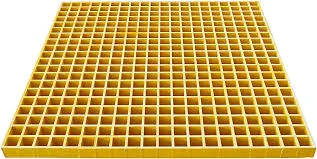
-
 Afrikaans
Afrikaans -
 Albanian
Albanian -
 Amharic
Amharic -
 Arabic
Arabic -
 Armenian
Armenian -
 Azerbaijani
Azerbaijani -
 Basque
Basque -
 Belarusian
Belarusian -
 Bengali
Bengali -
 Bosnian
Bosnian -
 Bulgarian
Bulgarian -
 Catalan
Catalan -
 Cebuano
Cebuano -
 China
China -
 China (Taiwan)
China (Taiwan) -
 Corsican
Corsican -
 Croatian
Croatian -
 Czech
Czech -
 Danish
Danish -
 Dutch
Dutch -
 English
English -
 Esperanto
Esperanto -
 Estonian
Estonian -
 Finnish
Finnish -
 French
French -
 Frisian
Frisian -
 Galician
Galician -
 Georgian
Georgian -
 German
German -
 Greek
Greek -
 Gujarati
Gujarati -
 Haitian Creole
Haitian Creole -
 hausa
hausa -
 hawaiian
hawaiian -
 Hebrew
Hebrew -
 Hindi
Hindi -
 Miao
Miao -
 Hungarian
Hungarian -
 Icelandic
Icelandic -
 igbo
igbo -
 Indonesian
Indonesian -
 irish
irish -
 Italian
Italian -
 Japanese
Japanese -
 Javanese
Javanese -
 Kannada
Kannada -
 kazakh
kazakh -
 Khmer
Khmer -
 Rwandese
Rwandese -
 Korean
Korean -
 Kurdish
Kurdish -
 Kyrgyz
Kyrgyz -
 Lao
Lao -
 Latin
Latin -
 Latvian
Latvian -
 Lithuanian
Lithuanian -
 Luxembourgish
Luxembourgish -
 Macedonian
Macedonian -
 Malgashi
Malgashi -
 Malay
Malay -
 Malayalam
Malayalam -
 Maltese
Maltese -
 Maori
Maori -
 Marathi
Marathi -
 Mongolian
Mongolian -
 Myanmar
Myanmar -
 Nepali
Nepali -
 Norwegian
Norwegian -
 Norwegian
Norwegian -
 Occitan
Occitan -
 Pashto
Pashto -
 Persian
Persian -
 Polish
Polish -
 Portuguese
Portuguese -
 Punjabi
Punjabi -
 Romanian
Romanian -
 Russian
Russian -
 Samoan
Samoan -
 Scottish Gaelic
Scottish Gaelic -
 Serbian
Serbian -
 Sesotho
Sesotho -
 Shona
Shona -
 Sindhi
Sindhi -
 Sinhala
Sinhala -
 Slovak
Slovak -
 Slovenian
Slovenian -
 Somali
Somali -
 Spanish
Spanish -
 Sundanese
Sundanese -
 Swahili
Swahili -
 Swedish
Swedish -
 Tagalog
Tagalog -
 Tajik
Tajik -
 Tamil
Tamil -
 Tatar
Tatar -
 Telugu
Telugu -
 Thai
Thai -
 Turkish
Turkish -
 Turkmen
Turkmen -
 Ukrainian
Ukrainian -
 Urdu
Urdu -
 Uighur
Uighur -
 Uzbek
Uzbek -
 Vietnamese
Vietnamese -
 Welsh
Welsh -
 Bantu
Bantu -
 Yiddish
Yiddish -
 Yoruba
Yoruba -
 Zulu
Zulu
Exploring the Benefits and Applications of FRP Dual Lamination for Enhanced Durability and Performance
Exploring FRP Dual Lamination Products Innovation in Composite Materials
In recent years, the field of composite materials has witnessed significant advancements, particularly with the introduction of Fiber Reinforced Polymer (FRP) dual lamination products. These innovative materials combine the strength of fiber reinforcement with the protective qualities of polymer layers, leading to applications that range from construction to automotive and beyond. This article delves into the characteristics, benefits, and applications of FRP dual lamination products.
What is FRP Dual Lamination?
FRP dual lamination involves the use of two or more layers of polymer matrices reinforced with fibers, typically glass or carbon fibers. The dual lamination process enhances both the mechanical properties and the durability of the final product. By strategically layering materials, manufacturers can tailor attributes such as tensile strength, flexibility, and resistance to environmental factors, making them ideal for various challenging applications.
Key Characteristics
One of the standout features of FRP dual lamination products is their impressive strength-to-weight ratio. Compared to traditional materials like steel or concrete, FRP products are significantly lighter while offering enhanced structural integrity. This quality is especially advantageous in sectors where weight reduction is critical, such as aerospace and automotive industries.
Another important characteristic is corrosion resistance. The polymer matrix protects the fibers from environmental damage, ensuring that FRP components maintain their integrity over time even in harsh conditions. This attribute makes FRP dual lamination products particularly appealing for applications in marine environments or industrial settings where exposure to corrosive substances is common.
Benefits of FRP Dual Lamination
The benefits of utilizing FRP dual lamination products are numerous. First and foremost, these materials offer exceptional durability and longevity. By resisting corrosion, UV radiation, and moisture, FRP products require less maintenance over their lifecycle, translating to cost savings for businesses in the long run.
frp dual lamination product

Furthermore, the versatility of FRP products cannot be overstated. They can be fabricated into a plethora of shapes and sizes, allowing for customization to meet specific project requirements. This adaptability makes them suitable for various applications, from creating lightweight structural components to manufacturing intricate molds or fixtures.
Additionally, the energy efficiency of FRP production is becoming increasingly important in today's sustainable manufacturing landscape. Many FRP dual lamination processes can reduce waste and energy consumption compared to traditional manufacturing techniques, aligning with global efforts to minimize environmental impact.
Applications
The applications of FRP dual lamination products are vast and continually expanding. In the construction industry, these materials are often used for reinforcing structures, building façade elements, and creating lightweight bridges. Their resistance to moisture makes them ideal for applications in marine environments or areas susceptible to extreme weather conditions.
In the automotive sector, FRP dual lamination products are utilized in the manufacturing of body panels, interior components, and even structural elements, enhancing performance while reducing weight. The aerospace industry also benefits from these materials, where every ounce matters—their strength and lightness contribute to fuel efficiency and overall flight performance.
Moreover, the electrical and electronics industries utilize FRP for insulators and protective casings, leveraging their dielectric properties and mechanical strength.
Conclusion
FRP dual lamination products represent a significant evolution in composite materials, combining strength, versatility, and durability. As industries continue to seek innovative solutions to meet the demands of modern applications, FRP products stand out as a reliable option. With their myriad of advantages, it's no wonder that their adoption is on the rise across various sectors, paving the way for a more sustainable and efficient future in material science.









